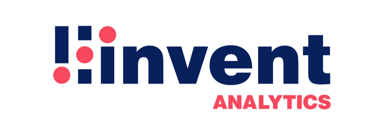HR Policies
HR functions seem like such complex and sometimes unnecessary efforts, but HR policies carry neither one of these prejudices. They are one of the most strategic approaches your HR department can choose to implement. They often play a role like scripture for most operations, struggles and everything HR related.
In this content, we explore the definition of HR policies, how they work, the types of policies, and it’s place and importance for your business goals. 👀
What are HR Policies?
HR policies are formal guidelines, principles and rules established by the company to manage any functions or struggles with ease. They provide a structured plan about anything related to employees, the workplace or the workflow within the organization. Creating thorough HR policies has lots of benefits to the management of your company; you can achieve ensured consistency, equity among the organization, and compliance with both company values and legal regulations.
Even though they get confused from time to time, HR strategy and HR policies are different from one another. HR strategy covers a broader range of issues, focusing on more long term issues and business goals.
While HR strategies include a much larger area of concerns, HR policies have a narrower scope. They are more specific than HR strategies and focus on the day to day operations within the business and the team. They act as guidelines, basing down ground rules to establish a structured plan in any issue HR related.
HR policies help businesses create a predictable and safe work environment while providing smooth operational flows within the organization.
Types of HR Policies: Which Ones Should You Implement?
1. Recruitment, Hiring & Onboarding Policy
A policy on recruitment, hiring and onboarding will make every step of the process of hiring a new candidate easier. A line of rules and guidelines assists your HR department during recruitment and hiring season.
These HR policies usually involve the required traits, skills and educations, and years of experience to provide an outline for recruitment. Following the hiring process, previously handled onboarding processes will help the new candidate get through the first period smoothly.
HR policies provide a smooth transition from hiring to day one.
2. Leave and Attendance Policy
HR policies regarding leave and attendance usually cover vacation and sick leave. Leave and attendance policies are structured annually, and they are necessary components in a work environment.
Vacation leave, also known as paid time off (PTO), is the type of leave where employees still get paid on leave. It has a significant place in human resources strategies, since it is crucial to create a space where work life balance is possible.
Sick leave is created to allow your employees to have paid time off while they are sick or taking care of a sick family member. It’s important to let your employees know that you put their health first above work, and once again, have work life balance in your workspace.
Attendance policies create an outline of what you expect of your employees when it comes to presence at work. They usually address punctuality, regular attendance, reporting absence, and breaks during work hours.
Leave and attendance policies manage all things related to these factors, fostering ground rules and order within the organization.
3. Compensation and Benefits Policy
Compensation and benefits policies provide a framework on elements regarding your employees’ compensation and rewarding. This policy covers salary structures and its different salary grades, bonuses – whether they are performance based or not, and benefits such as retirement, pension, health and wellness benefits.
This HR policy is a need at your business to ensure fairly compensation packages to your employees, which fosters a motivated and loyal workforce in your business. The right compensation and benefits policies will lead your company to organizational success.
4. Performance Management Policy
Performance management policies are crucial since performance management and reviews are important parts of the evaluation of workforce. These policies help align individual contributions with organizational goals, support employee growth, and ensure fairness in performance evaluations.
5. Resignation and Exit Policy
Resignation and exit policies play essential roles during the leaving process of an employee. This policy ensures legal compliance, and a fairly completed leave process.
These leaves might cover both voluntarily and involuntarily exits, things a policy should cover. Voluntarily exits are usually consisted of notice period resignation letter, final pay and return of company goods. Involuntarily exits has grounds for termination, severance pay and notice under its umbrella.
An HR policy regarding exits and resignations create the grounds for a smoother transition period for both the employer and the employee.
6. Importance of Implementing HR Policies
Implementing HR policies is crucial for establishing a consistent and fair work environment. These policies provide clear guidelines for managing various aspects of employment, from hiring to termination, ensuring compliance with legal requirements and reducing the risk of disputes.
They help align employee behavior with organizational goals, promote transparency, and foster a positive workplace culture. By setting expectations for both employees and management, HR policies also enhance efficiency, support employee well-being, and contribute to the overall stability and success of the organization.
Final Thoughts
In conclusion, HR policies are the backbone of any well-functioning organization, providing a structured approach to managing employee relations and workplace behavior. They help create a fair, transparent, and supportive work environment where both employees and the organization can thrive in their journeys and achieve their goals.
By clearly defining expectations, rights, and responsibilities, HR policies not only protect the business but also empower employees to perform at their best. Regularly reviewing and updating these policies ensures they remain relevant and effective in an ever-evolving business landscape, contributing to the long-term success of the organization.
Want to learn more? Visit Hirex – your go-to guide on everything HR, recruitment & more.
Get a demo
- Quickly find top candidates with smart application management
- Improve team collaboration using built-in communication and workflows
- Offer a smooth candidate experience to strengthen your employer brand
- Count on 24/7 support for a hassle-free hiring process
- Quickly find top candidates with smart application management
- Improve team collaboration using built-in communication and workflows
- Offer a smooth candidate experience to strengthen your employer brand
- Count on 24/7 support for a hassle-free hiring process
"We truly felt the speed difference. Everything was smoother, and candidate feedback was much more positive. It made our jobs easier."

Trusted by 100+ teams
Get Informed,F.A.Q.
Revolutionize your hiring process with our transformative Applicant Tracking System (ATS.)
Suggested keywords
What is Cultural Fit?
Let's talk numbers - 89% of employers put cultural fit at the top of their hiring checklist. Pretty huge. But wait a second... what exactly does cultural fit mean in today's fast-moving workplace?The ...
Employee NPS Benchmarks
An Employee NPS benchmark is basically a way to see how your company’s employee satisfaction stacks up against others. It helps turn your eNPS score into something useful by giving it context. 📌You'r...
Salary Benchmarking
Salary benchmarking is basically figuring out if what you're paying your team makes sense compared to what others are offering for similar roles. It’s like checking the going rate before you buy somet...















